I’ve hesitated to write about The Hunting of the Snark because I don’t understand it, and I am not alone in my befuddlement. There are entire societies devoted to the deciphering of literary puns and allusions in this complex masterwork by the writer of the equally complex but perhaps more accessible Alice in Wonderland. However, an incomplete grasp of the text is not an impediment to the enjoyment of this bit of nonsense. Even a small child can take pleasure in the sheer inventiveness of the wordplay, the first circle of Carrollian delight. Entry to the other circles of understanding is optional, and by optional I mean, I could go back to university and get an advanced degree in 19th century history, literary symbolism, and English banking practices, but I’m busy. And some very good and clever people have already gone to extraordinary lengths to unfuddle the Snark, giving the rest of us a free pass to the poetry behind the poem.
Never let it be said that I’m not up for the occasional literary challenge, especially where snark (of the more pedestrian variety) is concerned, displayed, or encouraged, but the real reason I picked up The Hunting of the Snark is for the gorgeous illustrations by Mahendra Singh~artist and Snark Hunter of the highest order. But beware: drawing attention to the loveliness of Singh’s illustrations is in no way to suggest they are lacking in a complexity equal to Carroll’s text. On the contrary, there is an agony of literary and artistic referencing in every illustration housed within the eight ‘fits’ of The Hunting of the Snark.
But, for now, just enjoy the ride. It’s a long, strange, and wonderfully rewarding trip
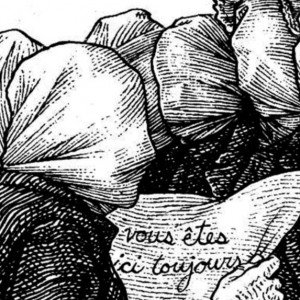 What is a Snark? Is it a thing? A person? A state of mind? According to Lewis Carroll, The Hunting of the Snark may be an allegory on the search for happiness, unless of course the Snark is actually a Boojum, which is a sub-species of Snark and not at all something that leads to happiness. Snark is a ‘portmanteau’ word, or the blending of two words, perhaps Snipe and Shark, or Snide and Remark, or maybe even Snack and Aardvark, not that I’d ever snack on an aardvark. Too gamey.
What is a Snark? Is it a thing? A person? A state of mind? According to Lewis Carroll, The Hunting of the Snark may be an allegory on the search for happiness, unless of course the Snark is actually a Boojum, which is a sub-species of Snark and not at all something that leads to happiness. Snark is a ‘portmanteau’ word, or the blending of two words, perhaps Snipe and Shark, or Snide and Remark, or maybe even Snack and Aardvark, not that I’d ever snack on an aardvark. Too gamey.
The Hunting of the Snark is told in eight ‘fits’ or chapters, and follows the format of a graphic novel with multiple panels per page. A crew of 10, uh, I was going to say men but one crew member is a beaver, is assembled for the purpose of hunting Snark. Rather than names, they are referred to by their various descriptions, all of which begin with the letter ‘B’: the Bellman (the ring leader, heh), a Boots, a Bonnet-maker, a Barrister, a Broker, a Billiard-marker, a Banker, a Butcher, a Baker, and the afformentioned Beaver. The ‘B-boys’ as Singh calls them, set off in a boat, which is at times, a canoe, Gericault’s Raft of the Medusa, a submarine, and a full-on 19th century sailing vessel. To say that adventure ensues implies a sort of recognizable Blytonian narrative. This is decidedly not the case, as the Snark ‘will not be caught in a commonplace way’:
‘They sought it with thimbles, they sought it with care; They pursued it with forks and hope; They threatened its life with a railway share; They charmed it with smiles and soap.’
What about a gun? Just sayin’
The B-boys uncommon pursuit of the Snark includes the following: the trial of a pig (rather fetching in powdered wig) accused of deserting his sty, the Beaver (and the monolith) giving a math lesson to a cast of characters from a Bosch painting, a Bandersnatch melee, some rather menacing forks, the appearance of both
Van Gogh and Freud (smoking a hookah), and the whole gang, at one point, joining the circus. And of course, when one of their number finally discovers the Snark, he ‘softly and suddenly vanishes away.’ For the Snark was a Boojum, you see. Apparently this was the sentence that flashed through Lewis Carroll’s mind on a July day in 1874. A random, nonsense line that inspired the nonsense poem, written over two years and ‘crammed’ with references so plentiful in number and perverse in their obscurity they have obsessed and fascinated countless Snark hunters from the 19th to the 21st centuries. I got a few of them. Just a few. The rest I’ll leave for another day, another reading.
Surrealistic imagery and philosophy informs every page of this book. Rationality is cast aside in favour of the irrational. The Hunting of the Snark is the stuff of dreams, in other words. The Surrealists loved Carroll, and Singh is most definitely waving the Surrealist flag, or fish, as it were, in his unique interpretation of The Snark. The Butcher resembles an Easter Island monolith. Another character sports a birdcage for a head. The steering column is made not of wood but of artery, perhaps the aorta. Is this the heart of the ship? Maybe it’s not even an artery but some other bit of bodily tissue. Decorated cakes float in the water, squids intertwine with ropes. The Barrister plays a bagpipe, or goosepipe, as it is clearly a goose that is being is compressed. Would the sound be any different?
One of the great Surrealist masterpieces, Dali’s The Persistence of Time, is directly referenced in a panel showing clocks sliding off a frying pan, but Singh does not confine himself to the Surrealist oeuvre:
“I had to rummage through the entire history of art to explain certain verses, all the way from the Classical Rome of the Laocoon to the Late Medieval Flemish nightmares of Hieronymus Bosch and even the drawings of the Pre-Raphaelite artist, Henry Holiday, the original illustrator of the Snark.”
I also see a little Gorey, and the more contemporary influence of Terry Gilliam, or at least the Terry Gilliam of the Monty Python era. No surprise; Gilliam, like Singh, is a fellow surrealist in possession of some truly mad illustrative skills, driven by a sharp sense of the absurd. Influences and allusions aside, the black & white illustrations by Singh are simply breathtaking, but also strange, and funny, and worthy of concentrated, long-term attention. I imagine that if I’d had this book as a child, the images would have left a permanent impression on my brain. Right next to Mad Magazine.
As a newbie Snark Hunter, many of the textual and visual references have yet to reveal themselves. Other than successive readings, which is a given, or a dive back into University, which is unthinkable, Mahendra Singh’s website is the next stop on the Snark Express. Rarely have I run across a website as smart, and funny, and visually stunning as Singh’s Snark-based blog, The Hunting of the Snark: Fitfully Illustrating Lewis Carroll & Other Graphic Agonies. Not only is it a huge resource for all things Snark, Singh’s blog is also a witty and entertaining read, whether you are hunting for snarks, snipes, sharks, or just a cheerful conversation about art and writing. There are also many fine examples of Singh’s gorgeous artwork, including some tantalizing non-snark art. I would also highly recommend this Singh interview on the Melville House website, which you can listen to here. Never has a Snark been so richly and beautifully served by its pursuer. Happy hunting!
Mahendra Singh lives in Montreal, Quebec. His favourite number is 42.
The Hunting of the Snark: An Agony in Eight Fits by Lewis Carroll. Illustrations by Mahendra Singh. Melville House Publishing, 2010 ISBN: 978-1935554240

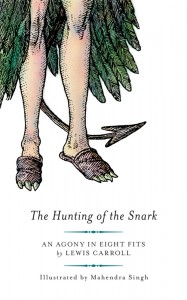



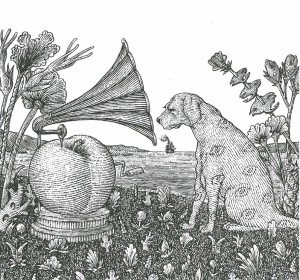


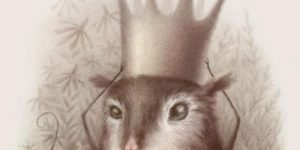
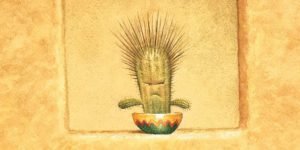

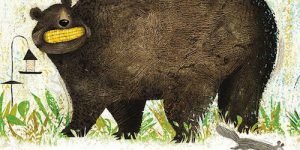
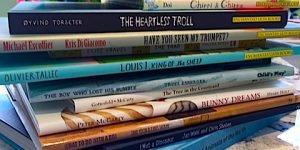

Hi Donna,
To get away from the lunacy of Facebook & Twitter, I decided to hunt me some Snark. Just ordered a copy from Amazon. The Luddite in me is embraced